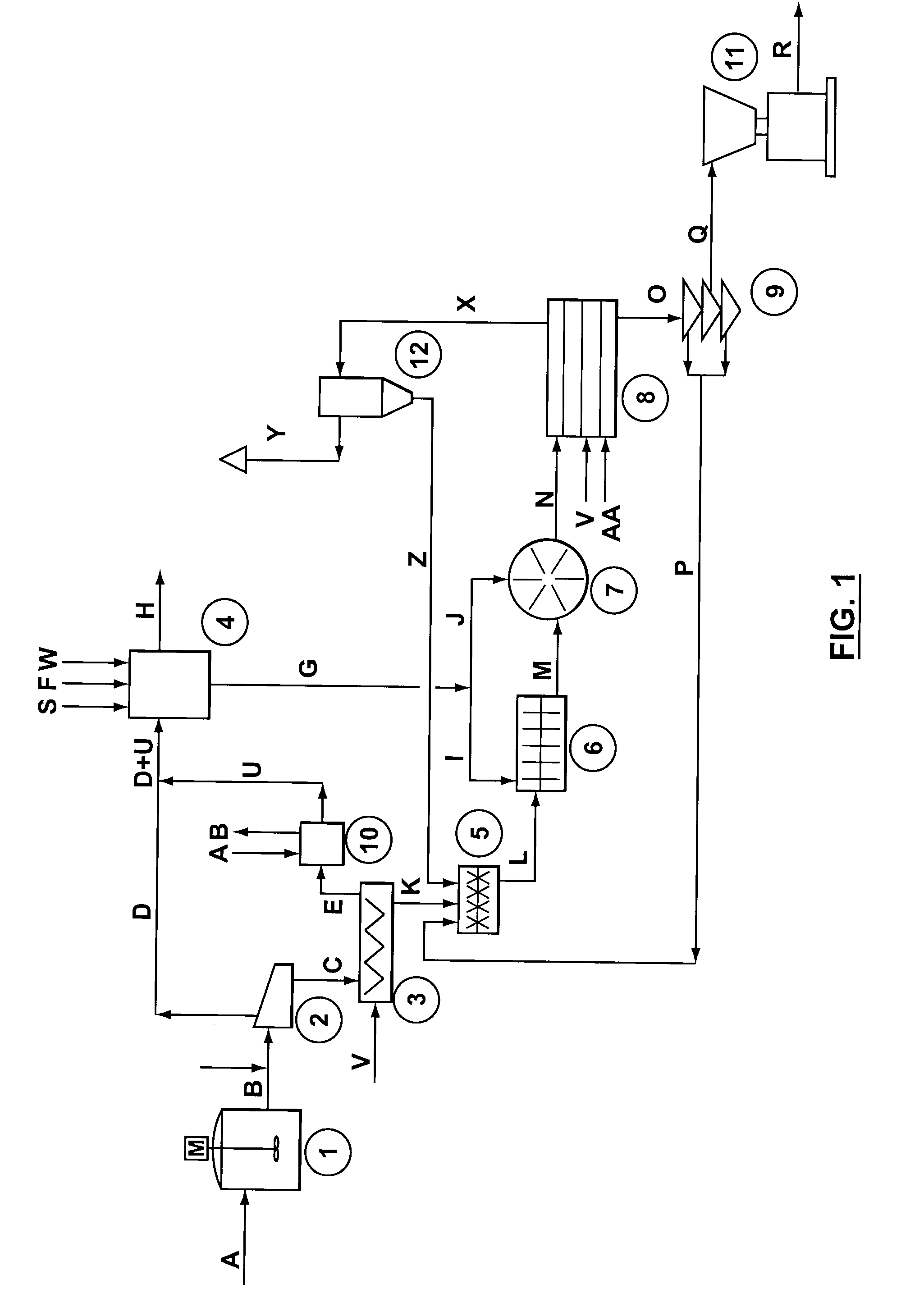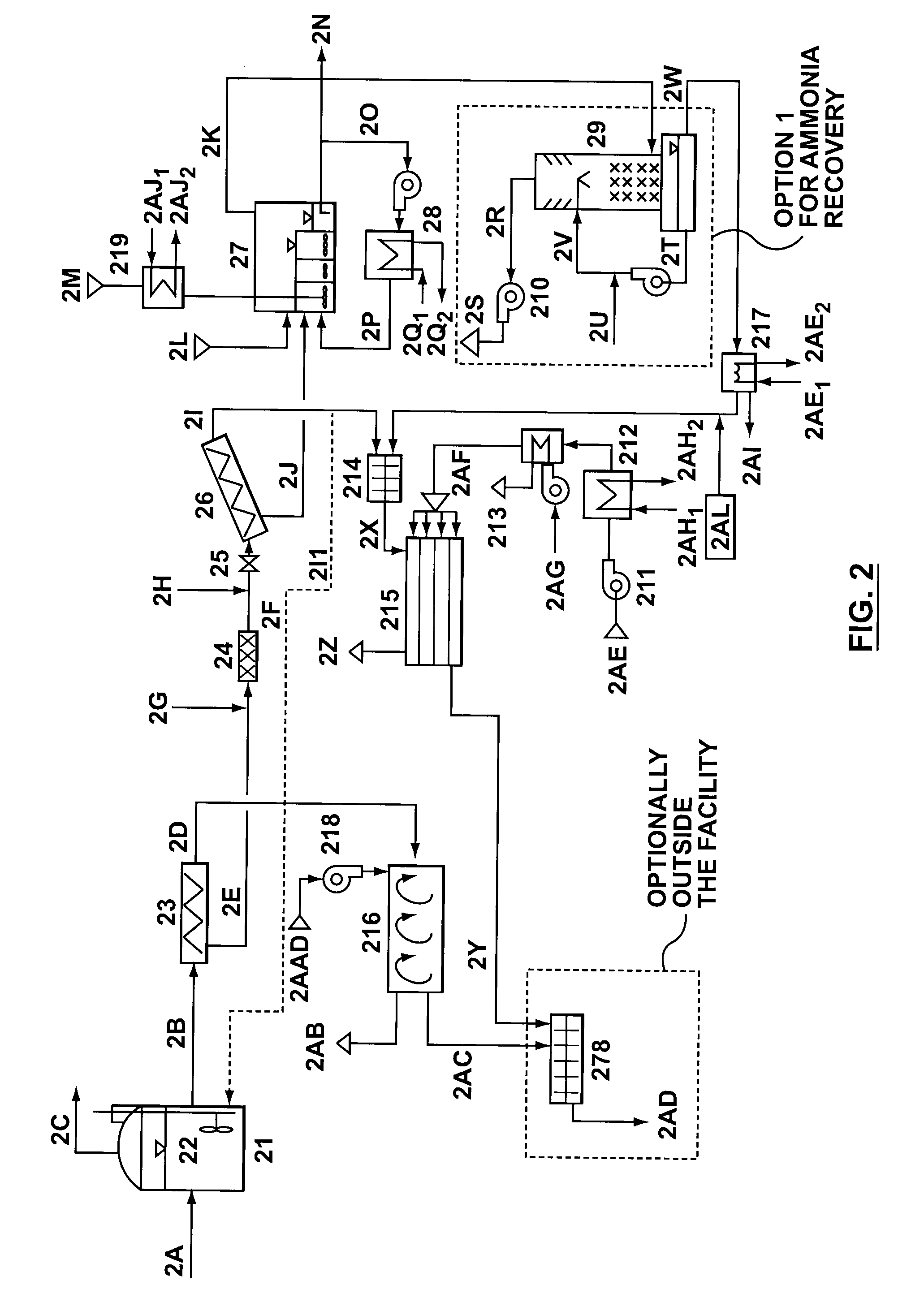Organics and nutrient recovery from anaerobic digester residues
a technology of anaerobic digester and organics, applied in the field of organics and nutrient recovery from anaerobic digester residues, can solve the problems of increasing the loss of ammonia along with the evaporated water, and the sludge dewatering process would lose much of the ammonia with the removal of water
- Summary
- Abstract
- Description
- Claims
- Application Information
AI Technical Summary
Benefits of technology
Problems solved by technology
Method used
Image
Examples
example
[0065]Waste activated sludge was treated in an anaerobic digester at a municipal wastewater treatment plant. Sludge from the digester was dewatered with a centrifuge to produce a centrate. Ammonium bicarbonate was added to the centrate to reach ammonia and alkalinity concentrations typical of a high solids anaerobic digester used to treat industrial and agricultural substrates. No other chemicals were added. The modified centrate was treated in an ammonia removal device and process as described above. Concentrations of ammonia and alkalinity were measured in the centrate feed to the ammonia stripping device and in the liquid effluent removed from the ammonia stripping device. The results of the experiment are shown in Table 1 below. Process conditions and parameters and device (reactor) volumes during the experiment are given in Table 2 below.
TABLE 1AlkalinityNH3—N% Removal% RemovalSamplemg / L as CaCO3pHmg / LAmmonia-NAlkalinityFeed237508.67400Effluent37509.2100086%84%
TABLE 2DiffusedCr...
PUM
| Property | Measurement | Unit |
|---|---|---|
| temperature | aaaaa | aaaaa |
| temperature | aaaaa | aaaaa |
| size | aaaaa | aaaaa |
Abstract
Description
Claims
Application Information
 Login to View More
Login to View More - R&D
- Intellectual Property
- Life Sciences
- Materials
- Tech Scout
- Unparalleled Data Quality
- Higher Quality Content
- 60% Fewer Hallucinations
Browse by: Latest US Patents, China's latest patents, Technical Efficacy Thesaurus, Application Domain, Technology Topic, Popular Technical Reports.
© 2025 PatSnap. All rights reserved.Legal|Privacy policy|Modern Slavery Act Transparency Statement|Sitemap|About US| Contact US: help@patsnap.com



